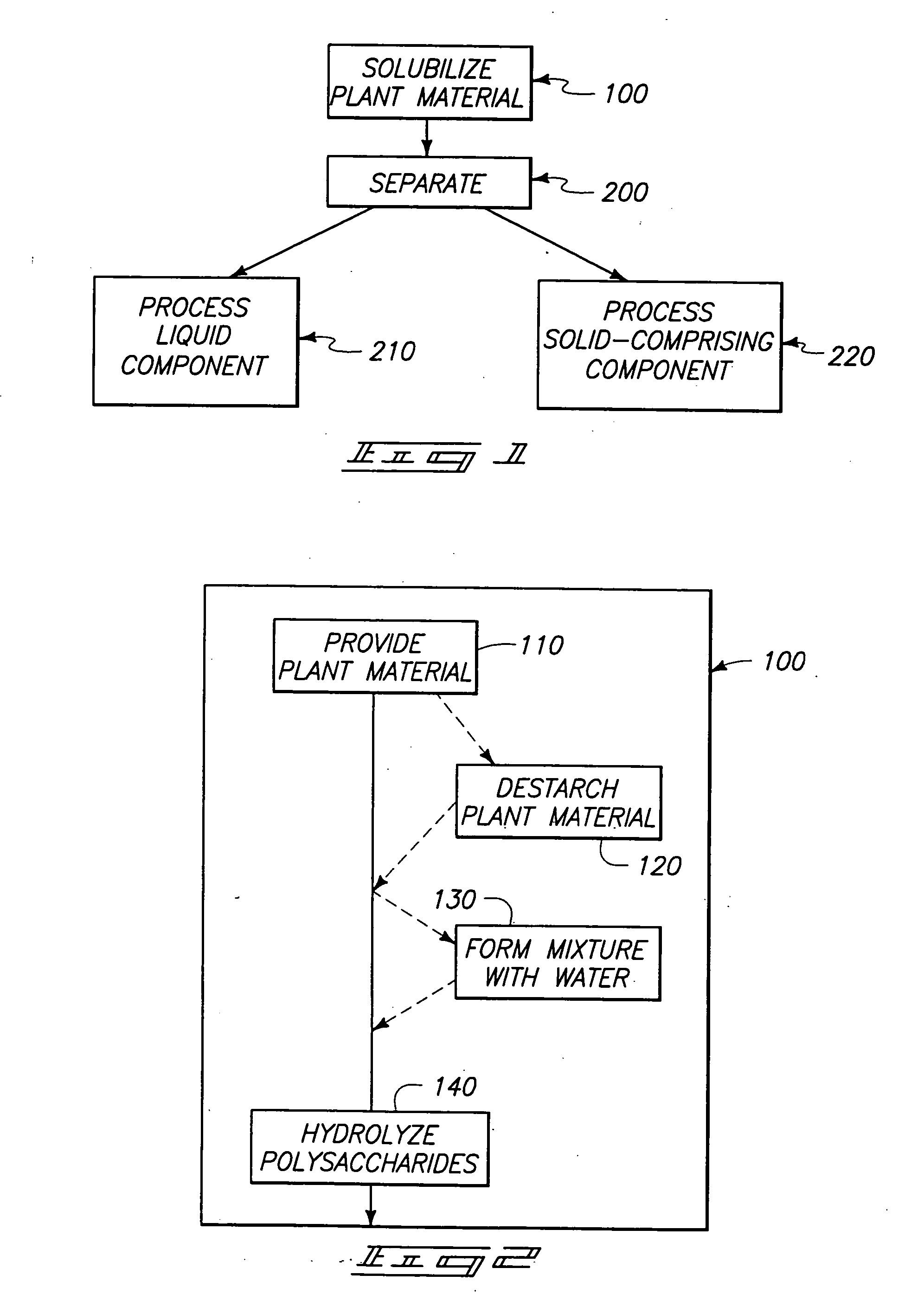Methods of producing compounds from plant material
a technology of plant fibers and compounds, applied in the field of processing plant materials and methods of producing compounds from plant materials, can solve the problems of limited use of plant fiber byproducts, and achieve the effect of reducing the number of byproducts
- Summary
- Abstract
- Description
- Claims
- Application Information
AI Technical Summary
Benefits of technology
Problems solved by technology
Method used
Image
Examples
Embodiment Construction
[0015] The invention encompasses methods which can be utilized for generating compounds from plant materials. A preliminary processing method encompassed by the present invention is described with reference to FIG. 1. In an initial solubilization step 100 of the preliminary processing, plant material is at least partially is solubilized. In a separation step 200, the plant material solubilized in step 100 is separated into liquid and solid-comprising components.
[0016] Step 100 of FIG. 1 is described in greater detail with reference to FIG. 2. The plant material solubilization step 100 initially involves a plant material providing step 110. The plant material provided in step 110 is not limited to a specific plant type and can include, for example, material from one or more of corn, soybean, rice, barley, oats, chicory, wheat, and sugar beet. A mixture comprising the provided plant material and a liquid can be formed in an optional mixture formation step 130. Preferably, step 130 co...
PUM
| Property | Measurement | Unit |
|---|---|---|
| time | aaaaa | aaaaa |
| temperature | aaaaa | aaaaa |
| temperature | aaaaa | aaaaa |
Abstract
Description
Claims
Application Information
 Login to View More
Login to View More - R&D
- Intellectual Property
- Life Sciences
- Materials
- Tech Scout
- Unparalleled Data Quality
- Higher Quality Content
- 60% Fewer Hallucinations
Browse by: Latest US Patents, China's latest patents, Technical Efficacy Thesaurus, Application Domain, Technology Topic, Popular Technical Reports.
© 2025 PatSnap. All rights reserved.Legal|Privacy policy|Modern Slavery Act Transparency Statement|Sitemap|About US| Contact US: help@patsnap.com



